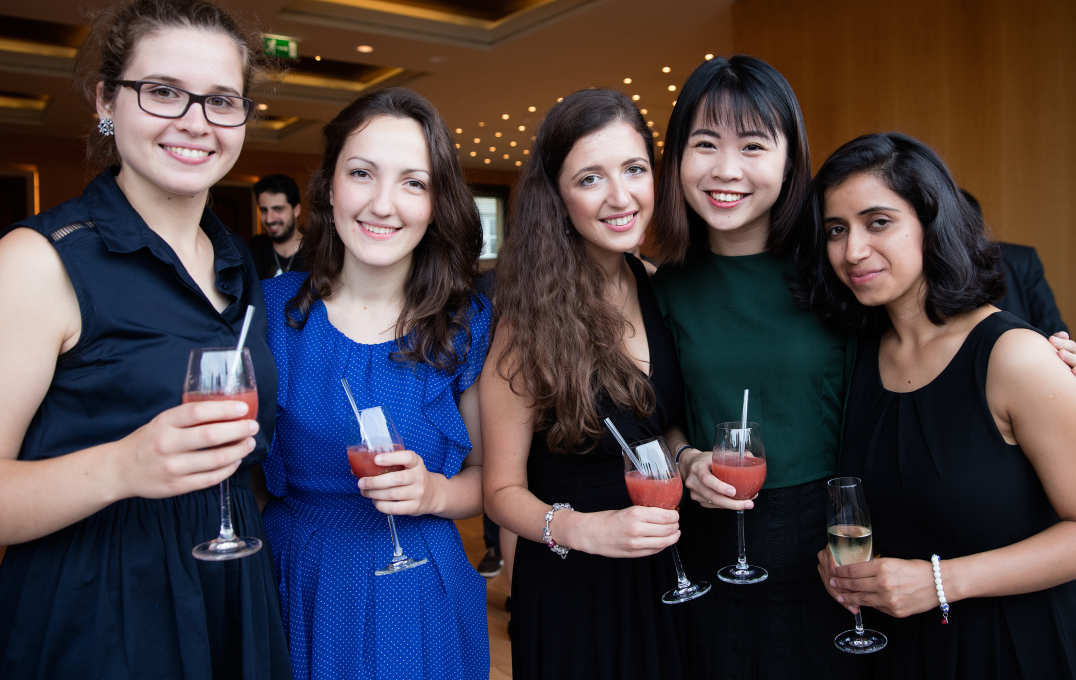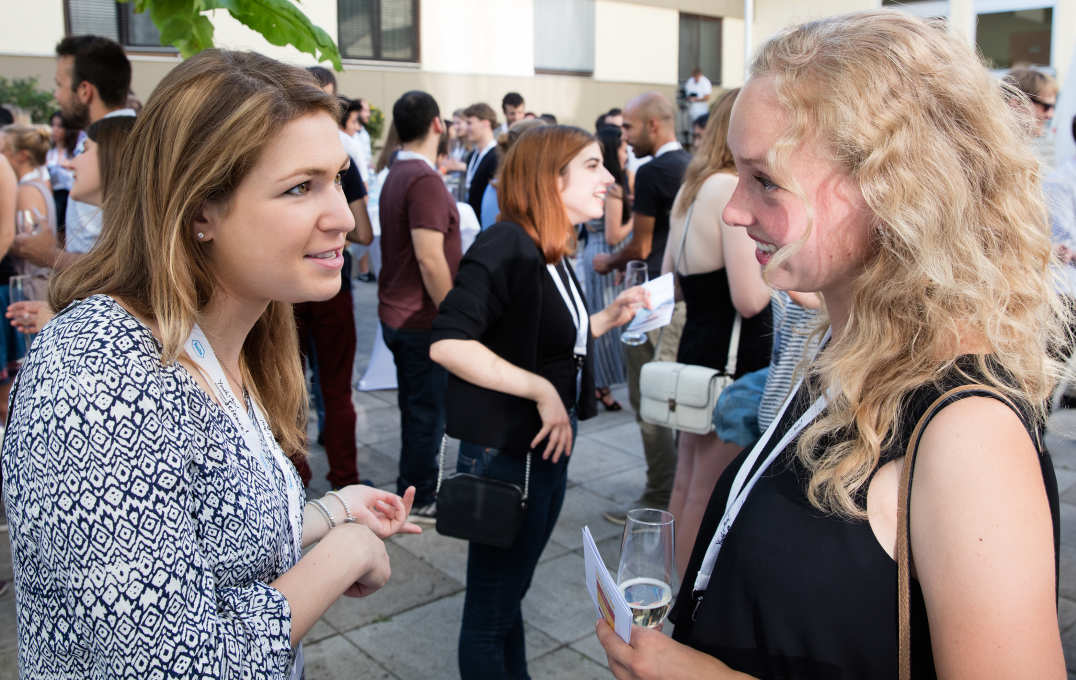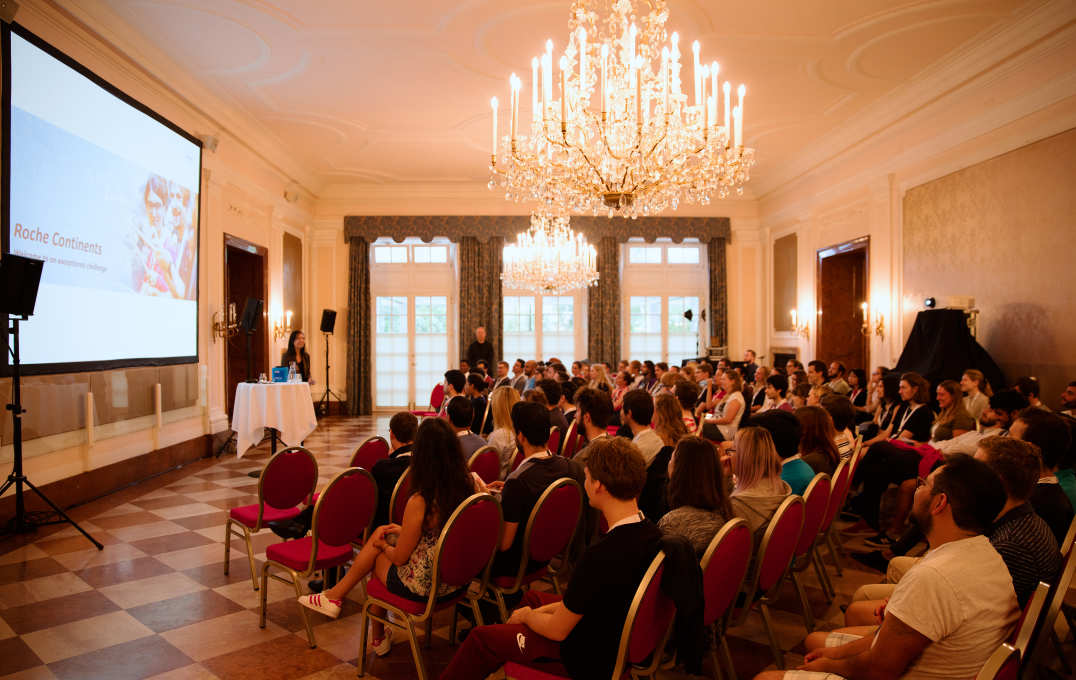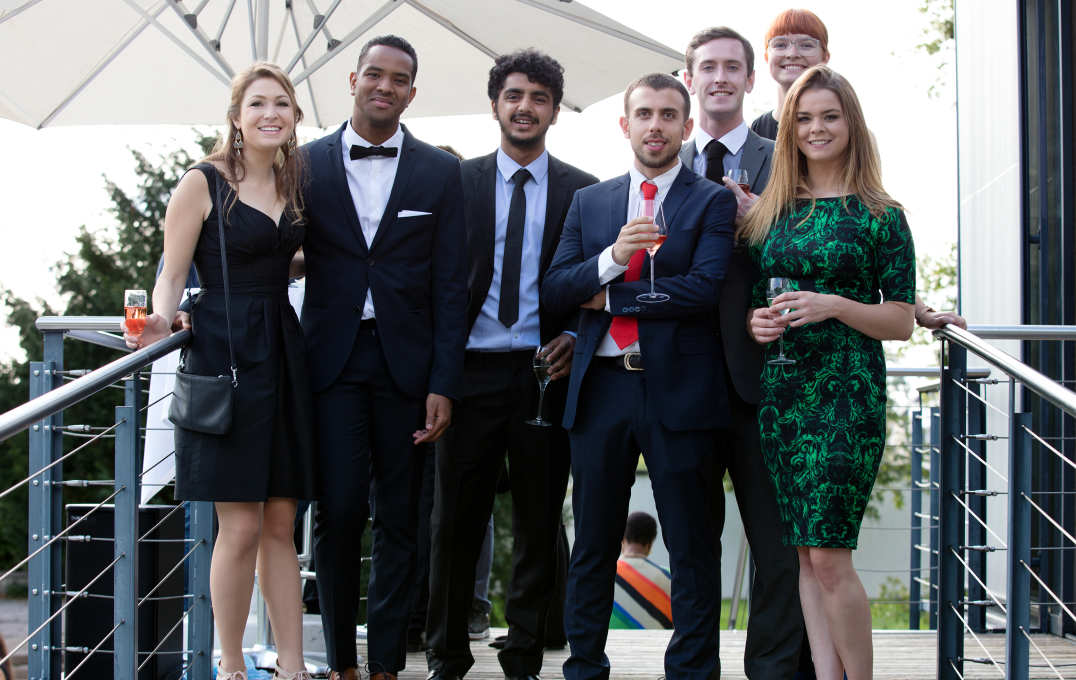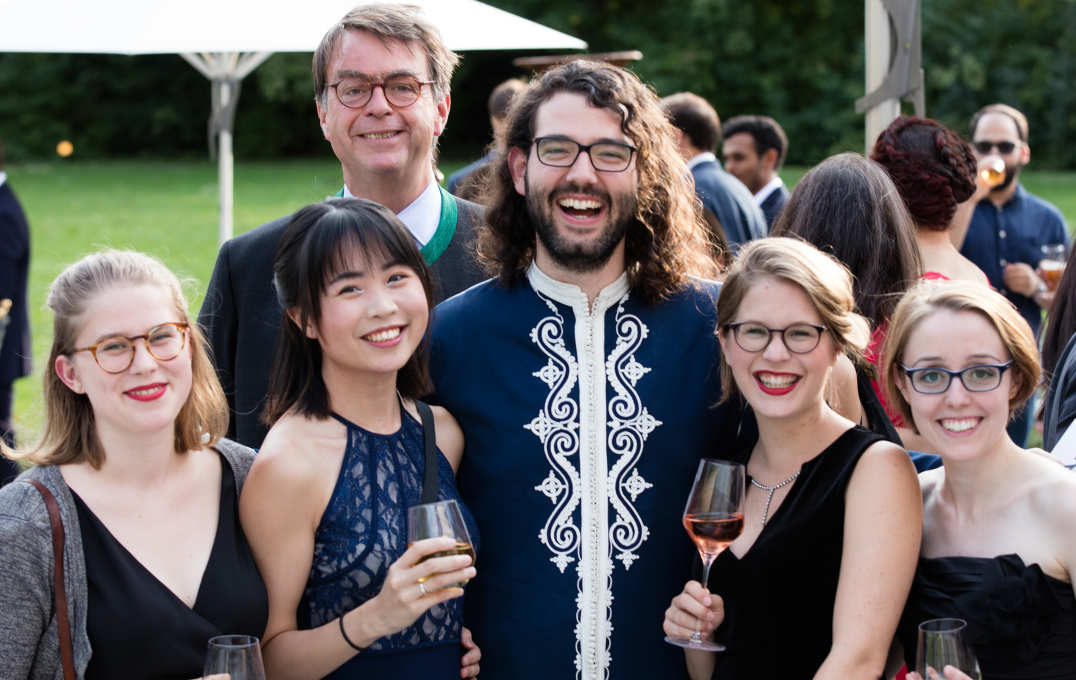Imperial students explore the intersection of science and art in Austria
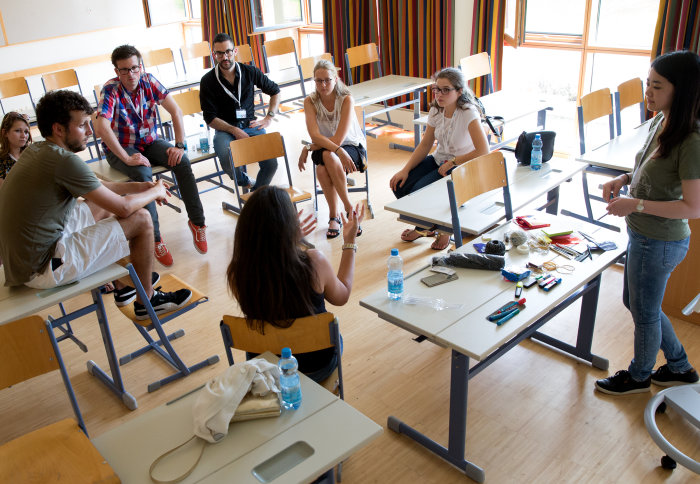
Students in a workshop at Roche Continents 2017
Roche Continents brings together 100 European students to challenge the boundaries and relationships between science, art and innovation.
FoNS students Miriam Aczel, Paul Mannix, Sarab Sethi and Sabrina Tay travelled to Salzburg, Austria to attend the Roche Continents programme last year; here they reflect on their experience.
Why were you interested in the Roche Continents programme?
Miriam: I am interested in how artists and scientists use creativity in their chosen fields. What do we have in common and how are our approaches different? What can we learn from each other? Can collaboration strengthen our work? I participated in Imperial’s ‘PhD Research as Art’ competition, which sparked my interest in communicating scientific research using photography.
Paul: As a curious person, I thoroughly enjoy both art and science. In isolation each can become specialised and overwhelming, so I was excited by the opportunity for fascinating discussions with other students.
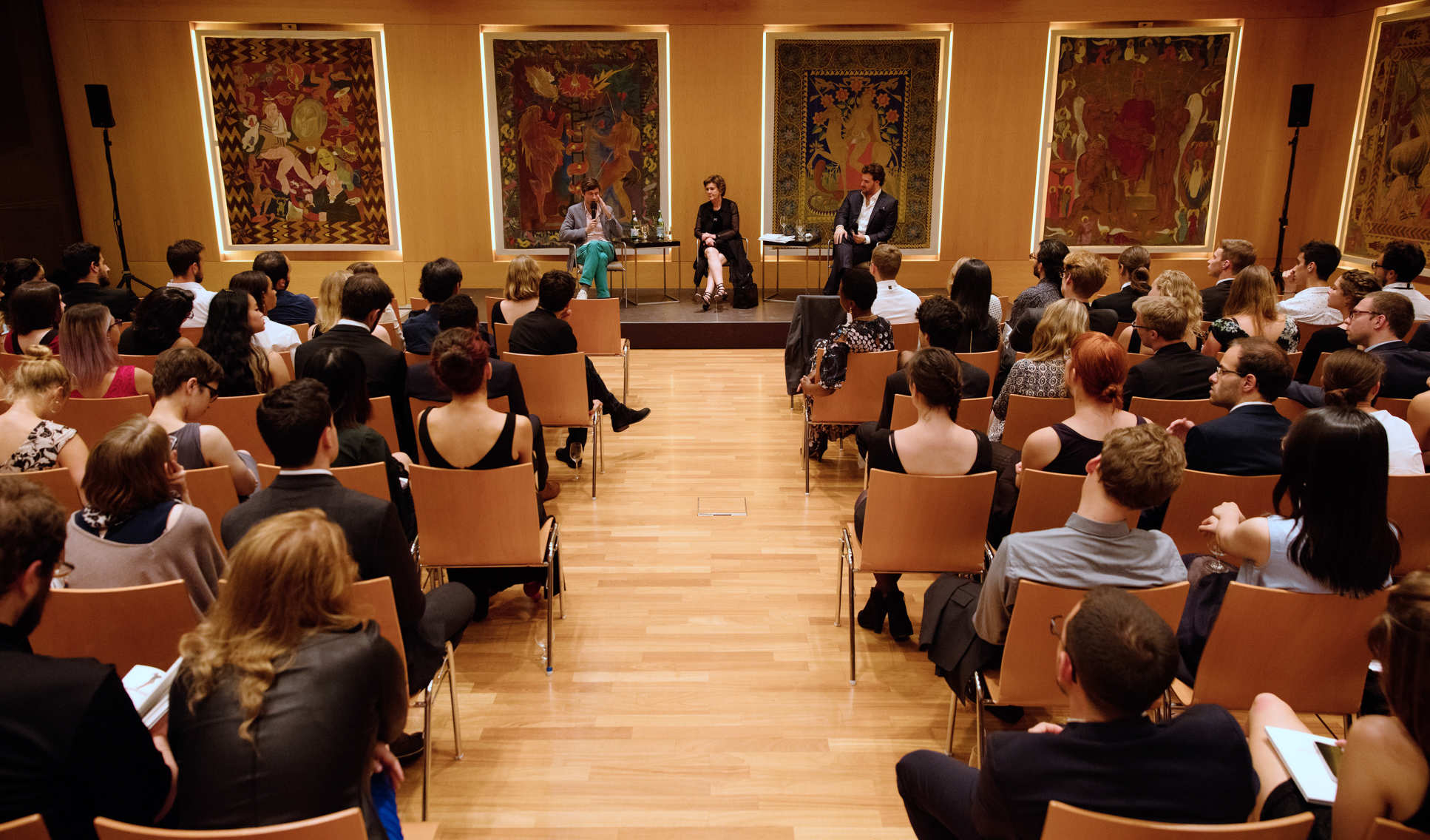
What did you get up to during your week in Salzburg?
Sabrina: Activities revolved around the theme of “Spectrum of Power”. We kick started every day with “Mindful Morning”, a Tai Chi exercise that helped me to relax and focus on the present moment.
Paul: During the day scientists and artists presented their work, philosophy and motivations. The main stimulus for inspiration was the discussion of how the individuals try to be creative in their respective fields no matter the specialism. Discussions with composers, jazz musicians and conductors made it clear to me that the artistic and scientific processes face some equivalent challenges. The search for new possibilities seemed to resonate with us all.
Miriam: I had no idea what to expect and I think that’s part of the magic. Spending a week in a beautiful city with a profound musical history, meeting students with diverse experiences from different universities – it was a memorable experience. The week was intense, with many activities packed into a tight schedule. We attended lectures on music and science, concerts and operas, a tour of the Salzburg festival and group presentations.
Sabrina: We were inspired to consider the possibilities that science and art have individually, and combined, in improving human experience. Our “late night reflections” sessions after each evening performance led to fascinating discussions about the pieces we had watched, which was enlightening and insightful as we were able to grapple with our own ideas in relation to each other.
How did the programme challenge your thoughts about science, art and innovation?
Sabrina: Safe to say, Roche Continents was extraordinary! Both science and art require creativity, unlimited curiosity, lateral thinking – as you are often in contact with the unknown – and a profound passion for your work. After experiencing the repertoire of concerts, and having deep discussions with the musicians and artists, my understanding of music has greatly broadened. It was truly enlightening to hear from those who had been studying the arts and music in great depth.
Paul: It certainly re-emphasised the importance of creativity and perspective in both science and art – that we must challenge the way we think and interpret the opinions and research we consume.
Miriam: The week was full of surprises, and this challenged my view about innovation and science. The first concert we saw was quite a shock. The use of intentional discord – atonality – led to an experience of cognitive dissonance. I kept waiting for the harmony and melody to come, trying to guess where the music would go next, but everything about the concert was uncomfortable. Analysing my discomfort made me consider how a non-scientist might feel when confronted with science jargon or conclusions that don’t seem ‘logical’. It also made me think about the role of innovation and surprise in art and science.
What was the most significant or exciting part your experience?
Paul: The exploration of themes through opera was particularly new and exciting for me.
Sabrina: Also the friendships we forged – we were thrown together with young people from at least 30 different countries, and this was exciting and inspiring. It enabled us to get to know each other in a space where we felt comfortable talking about societal issues within and beyond our own cultural and geographical understanding.
Miriam: One of my favorite things was the backstage tour of the Salzburg Festival. I was surprised to see just how much work went into every detail of the productions we had seen. Perhaps this is a useful analogy for an academic researcher – the amount of behind-the-scene effort, pain and elation that goes into producing the final paper!
Do you think it’s important for scientists and engineers to collaborate with and be interested in the work of artists and designers (and vice versa)?
Sabrina: I think it’s extremely important to have an open mind, and to consider aspects beyond our specific field of work. Exploration of transdisciplinary collaboration is important in pushing boundaries –between arts, humanities and the sciences, and between rationality and creativity.
Paul: Applied mathematics is concerned with modelling processes or systems, motivated by the desire to cultivate a more fundamental understanding of both physical and non-physical phenomena. Frequently this results in the application of known methods to an unstudied problem. Initially the problem must be simplified or posed in an idealised manner, so as to reduce its complexity to something solvable. However, caution must be exercised so as not to disregard important physics. One must think creatively to devise the most powerful method to solve the problem. Resolution of such issues forces creative thought.
Miriam: My research explores how the science related to the debate on fracking – which is a contentious issue – can be communicated effectively. How can non-specialist members of a community contribute to scientific work through both data collection and communication of findings? I am developing strategies of community involvement, both to improve the quality of the science and to deepen understanding of science that affects members of a community.
Had you ever had the opportunity to collaborate with artists, musicians and designers in this way before?
Miriam: For most of my academic career I have felt that I had to choose between arts and humanities or sciences, and there were limited opportunities for cross-disciplinary collaboration. This intensive week of cultural immersion, interesting lectures and discussions, meals and conversations lasting late into the night, opened my eyes to the fact that any activity is an opportunity for collaboration and learning from others.
As I scientist, I rely on my academic knowledge to solve problems. Roche forced me to look at problems from a perspective outside my discipline and trust my creative instincts—as well as the creative instincts of others.
Find out more about the Roche Continents programme.

Article text (excluding photos or graphics) © Imperial College London.
Photos and graphics subject to third party copyright used with permission or © Imperial College London.
Reporter
Claudia Cannon
The Grantham Institute for Climate Change
